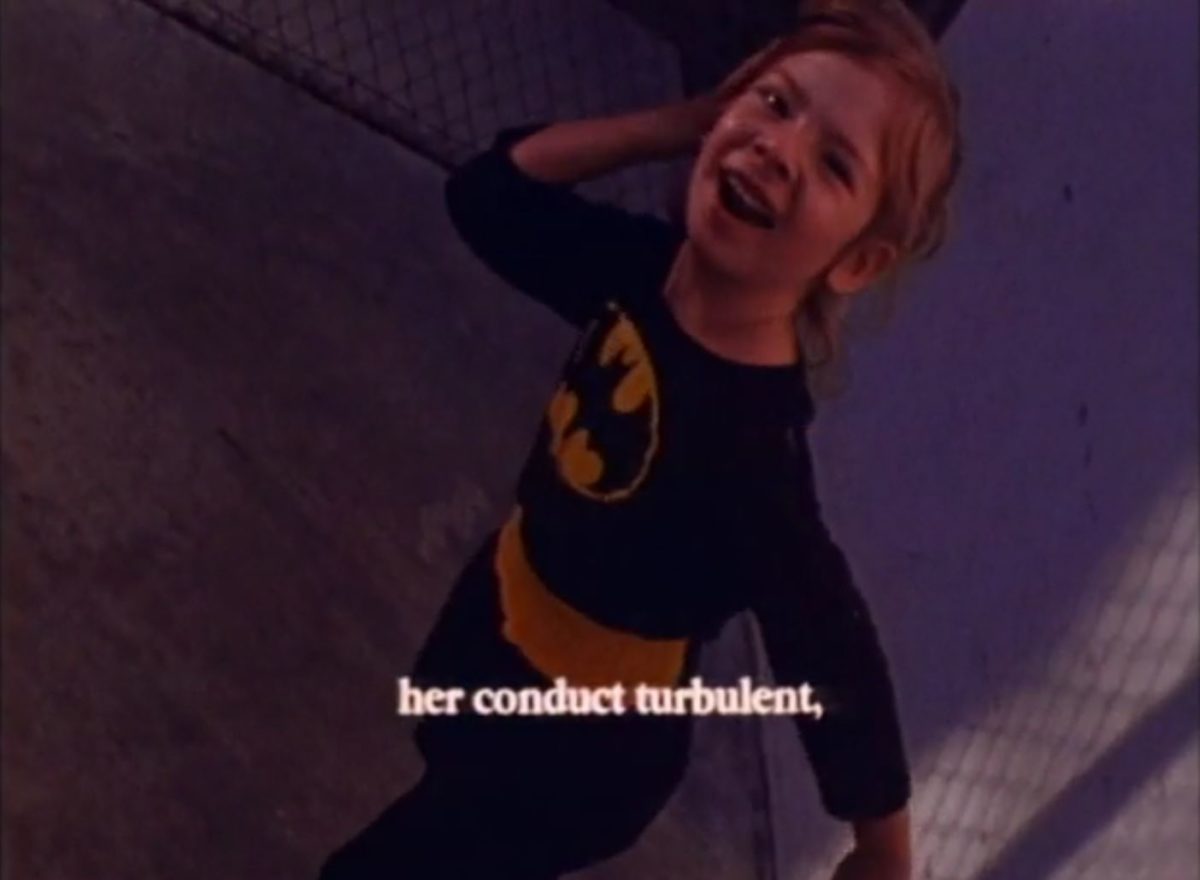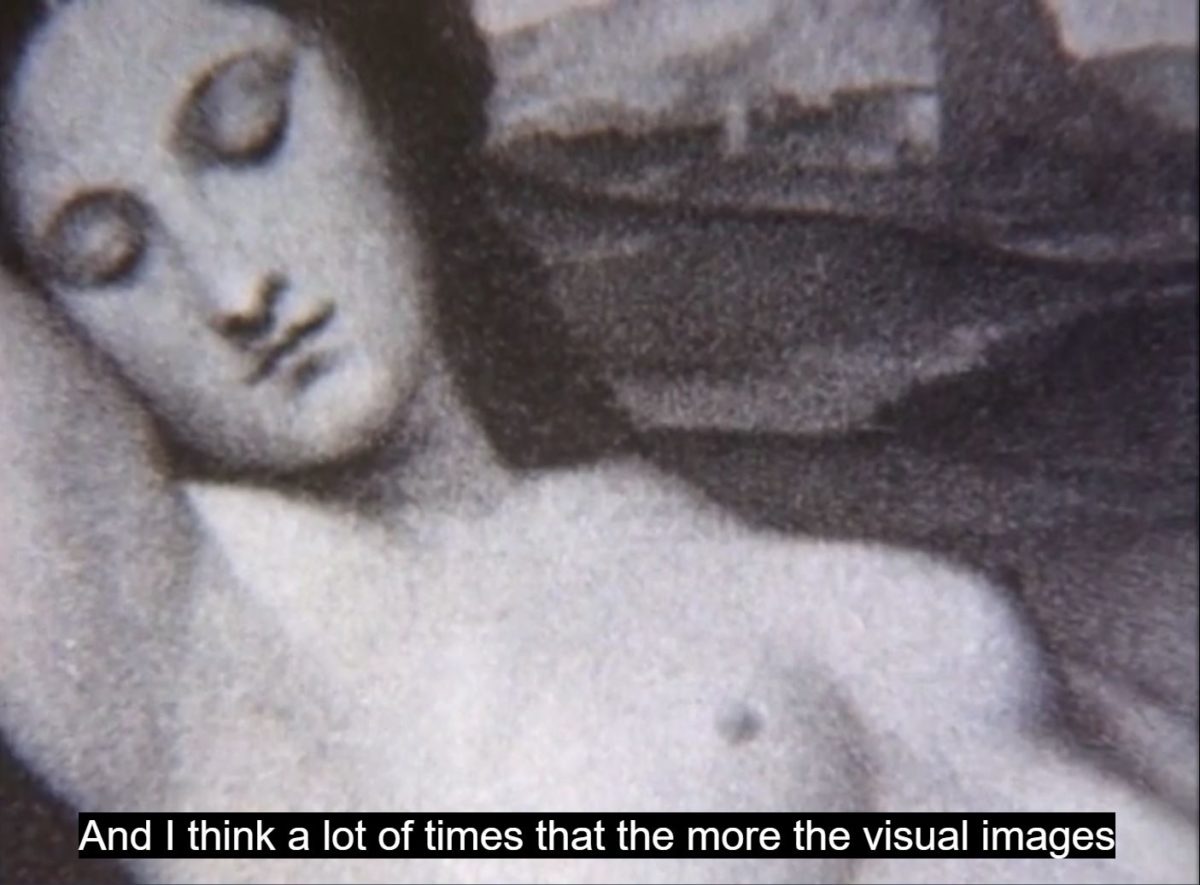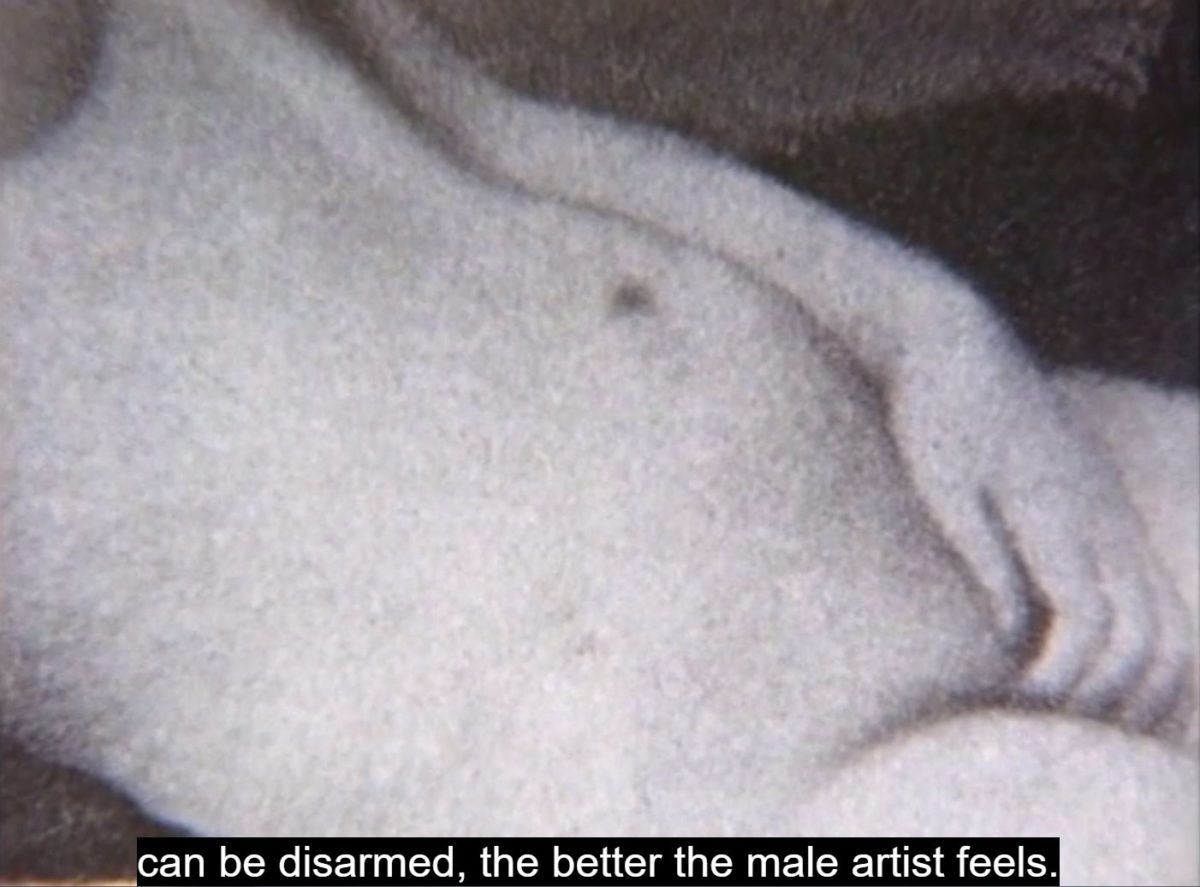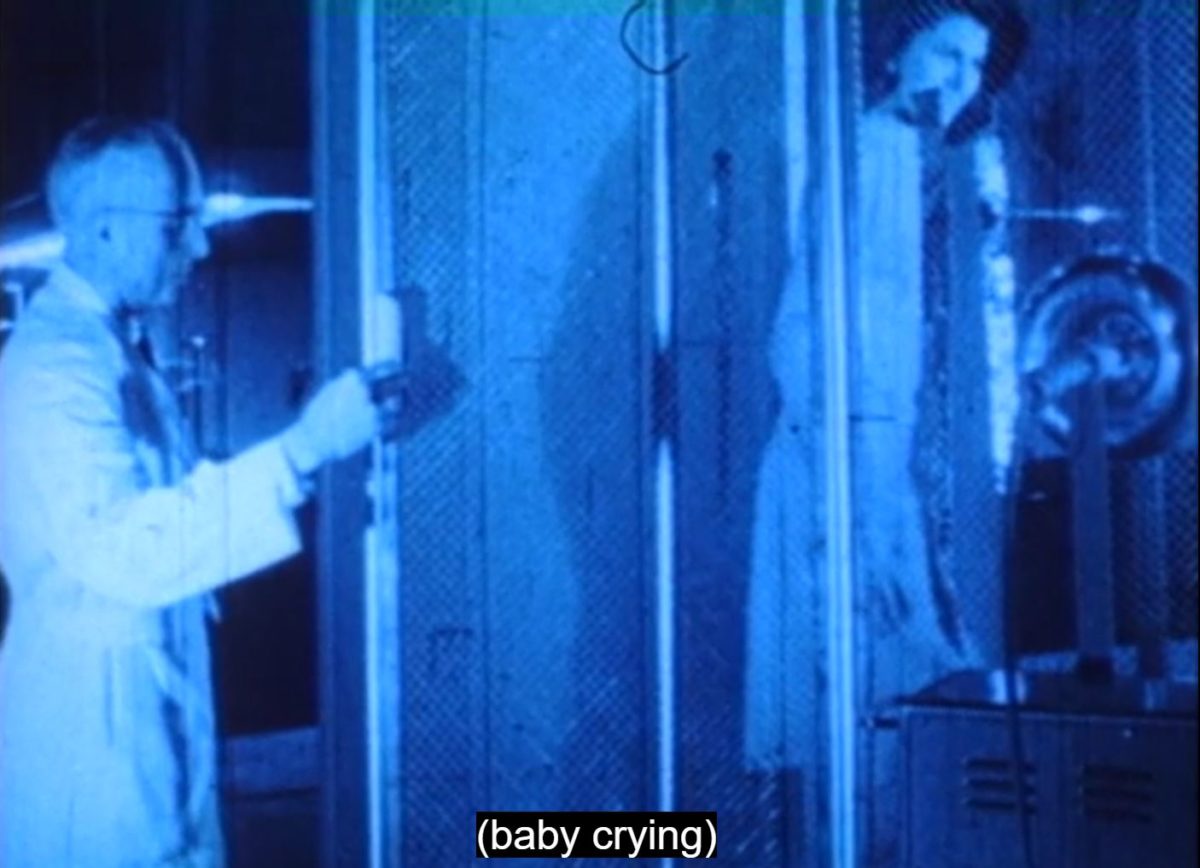In The House of Science: A Museum of False Facts (1991)Lynne Sachs has made The House of Science available on YouTube: https://www.youtube.com/watch?v=Kz-Rs_kMwPE, Lynne Sachs curates a moving-image exhibition of womanhood, carefully sampling artifacts from the past (fabricated truths built to sustain male dominancy), intertwined with empirical artifacts of her own history (personal truths and memories). Through the power of visual and aural association, several domains of the exhibit simultaneously unfold in front of us: the personal, the public and the historical. Sachs drifts between these domains smoothly until a whole network of information is gently bestowed upon us. We start with the image of a doctor guiding a woman into a glass booth, followed by him setting a model house on fire, and the sound of Sachs’ voice, telling us about her experience of being examined by an apathetic gynecologist while pregnant. The image of the detached male doctor lingers with us for the whole length of the movie, along with his perverse power over a female body, over her right to “bare armor”—as in, contraception—and over her right to give birth. Together with Sachs, we wince at the story of her obtaining a contraceptive diaphragm. The doctor has no issue sending her off into battle with her new armor and zero instructions on how to do it. “I leave his office fully equipped, protected, and completely incapable of placing that plastic sheath over my cervix. Where is my cervix?” Next, we see a naked woman rolling up and down a sand dune unceasingly.
Another moment sat with me throughout the movie, that of a little girl. A little girl learning to read, stumbling through the grotesque words of Dr. Cesare Lombroso, naively walking us through his diagnosis of a nine-year-old female, a “born thief”. Sachs explores the concept of criminal atavism by juxtaposing her daughter’s voice with the delusional criminalization of women based on their physical appearance. By pairing images of female child-like playfulness and purity with delusional artifacts of the late 19th century, she amplifies the gap between the male study of women and women themselves. She flows between the public, mainstream, male rationale and the private, subjective female counter-experience. We are left with the uncomfortable ambiguity of child-like giggles of lightness and historical screams of darkness.

At the core of Sachs’ exhibit lies her most intimate gaze upon womanhood. It is articulated into unspoken words on the screen:
“I am two bodies—the body of the body and the body of the mind. The body of the body was flaccid and forgotten. This was the body that was wet with dirty liquids, holes that wouldn’t close, full of smells and curdled milk.” (We hear pencil scratches.)
The body of the body of a woman is biologically destined to be softer and therefore more fluid. All this fluidity, open space, holes, smells are often psychologically coupled with shame. Sachs’ words here represent the experience of most girls becoming women. This body of ours is too visceral for both us and the world to accept.
“The body of the body moves in cycles, and with every repetition there is a sensation of pain. The arrival of the body of the body forces the body of the mind to take notice, begrudgingly so. With legs crossed, the blood is caught just before it crosses the border into the public domain” (We hear a person peeing and a loud flushing of the toilet.)
Not only is the body of the body full of liquids and smells, but they threaten to spill over into the public domain. Our bodies and all their products are trained to be confined.
“Filled with infectious, infected liquids, we hold in the blood, the water, the sneeze, the wax, the hair, the pus, the breath. All that is ours to let go, to release onto this earth is held in, contained. I am the cauldron of dangerous substances.”
To defeat this imposed belief system of male ideas which we were fed throughout our lives is to inspect and observe your body for yourself. It takes a lot of courage to look into your own body with curiosity, rather than shame.
“I trace a path across my chest, searching for surprises I’d rather not find, knots in the fabric.”
Women are being re-educated to examine themselves instead of being examined by the cold metal-handed gynecologist. However, self-examination carries a burden of unforeseen surprises. Releasing our juices into the public, into the mainstream. Bravely facing the knots in the fabric as early signs of our bodies decaying.
“Undressed, we read our bodies like a history. Scars, muscles, curves of the spine. We look at ourselves from within. Collect our own data, create our own science. Begin to define.”
Built from the inside out, this new laboratory pushes against the walls of the old structure. An incendiary effect, but not arson.
When we are brave enough to look into the stretch marks, the scars, the wobbles, the curves, we own our space, our fluids and our bones. We collect and process our data, introduce new terminology. We allow for the soft to be malleable, buoyant, rather than flaccid and weak. We allow for differences. We allow for change. We allow for expression to re-place suppression. We become safely vulnerable instead of avoidant or anxious. We spit our words and meanings out instead of swallowing them.


In between the personal and the public domain lie Sachs’ women. These are real, physical women, subjects of anatomical studies, as well as women in paintings, subjects of the male painter’s gaze. The first, forced silent, the latter, painted static, confined to a space in history, “to be taken”. We witness a female artist looking at men looking at women.
Despite the immanently observational, passive and saddening tone of the movie, there is a promise in this exhibit. A promise that by carefully unfolding and studying the history of womanhood, one is already shaking the habitual. Sachs’ voice is not passive at all, it is rather filled with precisely focused meditative anger, an eloquent scream for justice, live from the gynecologist’s office, calling for help and cooperation.
To aid and support this novel conception of womanhood, we seek out new imagery, new viewpoints, new forms. Sachs’ filmography is a great start. The House of Science shifted my gaze to earlier works of art, predating celluloid. I searched for an alternative museum of womanhood. In particular, the Viennese modernist painters Klimt, Schiele and Kokoschka stood out as engaging with the representation of women: as neither virgins nor whores, allowing their female subjects to escape this demeaning cage. They let their subjects move around freely, be comfortable, take up space, lie down wrapped up in themselves. Schiele went one step further: painting anger and anxiety on the faces of his subjects. “By exploring such subjects, the three artists simultaneously exhumed their own sexuality: their fears, sorrows, hopes, and ecstasies…their women do not necessarily submit passively to the male artistic gaze. They look back and demand to be understood on their own terms.”Jane Kallir, ‘Gustav Klimt, Egon Schiele, Oskar Kokoschka – Men Looking at Women Looking at Men’, p. 59, in: Agnes Husslein-Arco Jane Kallir and Alfred Weidinger, The Women of Klimt, Schiele and Kokoschka, 2015 These were not the only attempts by men to redefine womanhood in a feminist way. However, the others were often buried and forgotten, most likely because they were single, isolated sprouts of change.
Although revolutionary, the idea that cooperation could displace competition has certainly taken root lately. This idea insinuates that equality is actually a lot more functional and productive for all parties involved. A very timely example would be the evolution of a virus (or a random constituted body of persons, empowered by the state, with a specific aim, e.g. to enforce the law). If a virus were to survive, it would have to evolve in a cooperative manner with its host. Eventually, many highly infectious and pathogenic viruses have decreased their pathogenicity in order to keep their hosts alive. Some have even been completely eradicated over time. This gives me hope, both for us as a species and us as women. However, to put this into practice, we need both the unspoken voices to be heard and the destructive, competitive voices to fade out. It would have to be a cooperative effort.
